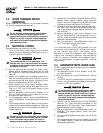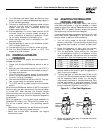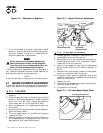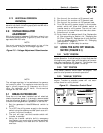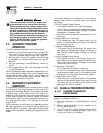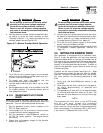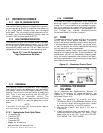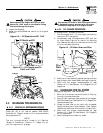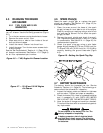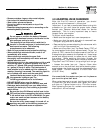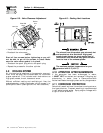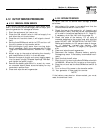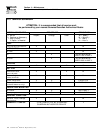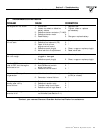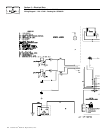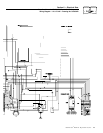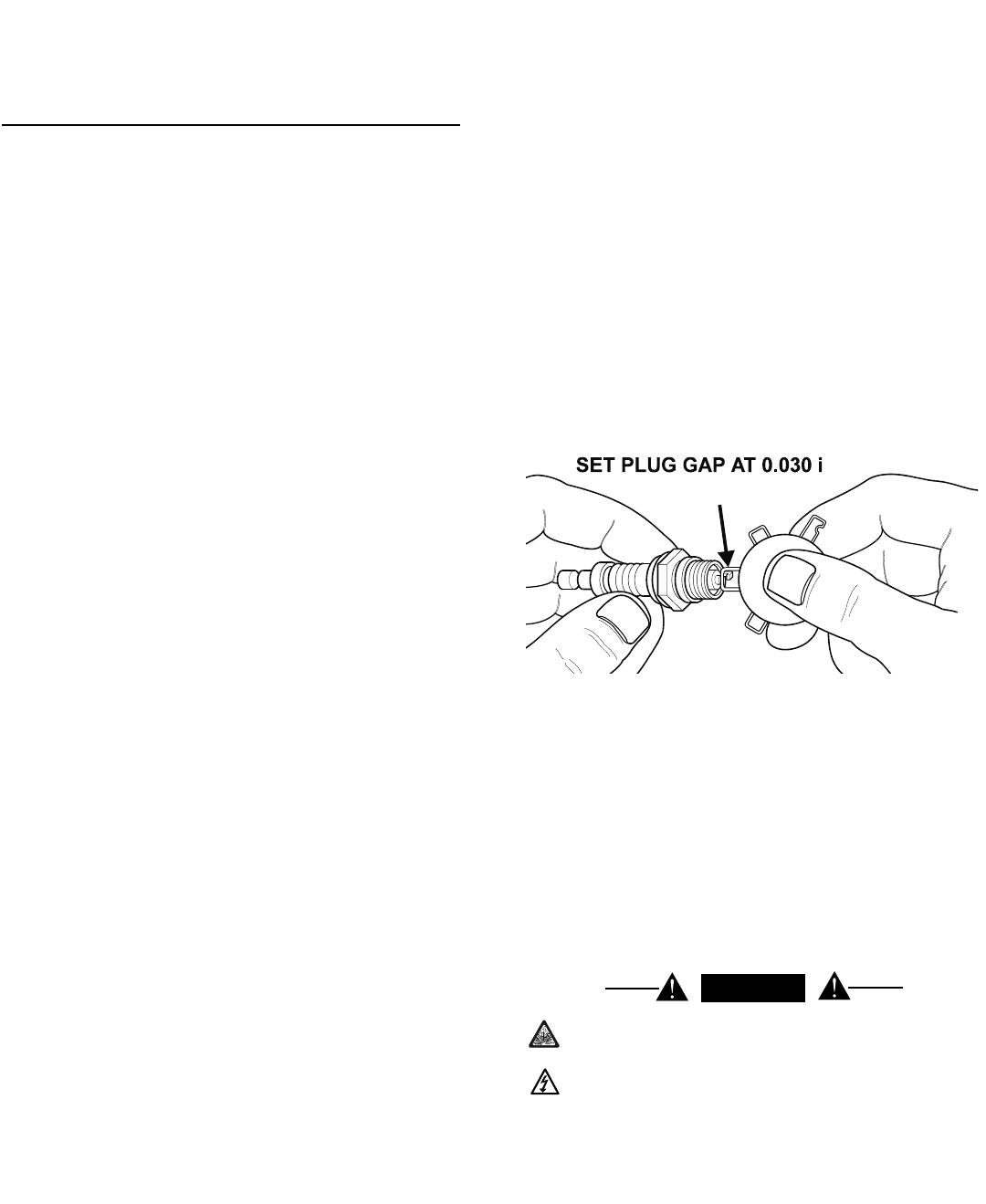
18 Generac
®
Power Systems, Inc.
4.5 CHANGING THE ENGINE
AIR CLEANER
4.5.1 7 KW, 12 KW AND 15 KW
GENERATORS
See Figures 1.2 and 1.3, (Page 5), for the location of
your air cleaner. Use the following procedure (Figure
4.6):
1. Turn the two screws counterclockwise to loosen.
2. Remove the cover and air filter.
3. Wipe away dust or debris from inside of the air
box and around edges.
4. Install the new air cleaner into the air box.
5. Install the cover. Turn the two cover screws clock-
wise to tighten.
See the “Service Schedule,” Section 4.11 (Page 19) for
air cleaner maintenance. See Section 1.5.1 (Page 6)
for air filter replacement part number.
Figure 4.6 — 7 kW, Engine Air Cleaner Location
Figure 4.7 — 12 kW and 15 kW Engine
Air Cleaner
4.6 SPARK PLUG(S)
Reset the spark plug(s) gap or replace the spark
plug(s) as necessary. See Section 4.11 (Page 19) for
maintenance requirements.
1. Clean the area around the base of the spark
plug(s) to keep dirt and debris out of the engine.
Clean by scraping or washing using a wire brush
and commercial solvent. Do not blast the spark
plug(s) to clean.
2. Remove the spark plug(s) and check the condi-
tion. Replace the spark plug(s) if worn or if reuse
is questionable. See Section 4.11 (Page 20) for
recommended inspection.
3. Check the spark plug gap using a wire feeler
gauge. Adjust the gap to 0.76 mm (0.030 inch) for
7 kW and 0.50 mm (0.020 inch) for 12/15 kW by
carefully bending the ground electrode (Figure
4.8).
Figure 4.8 – Setting the Spark Plug Gap
4.7 BATTERY MAINTENANCE
The battery should be inspected per the “Service
Schedule,” Section 4.11 (Page 19). The following pro-
cedure should be followed for inspection:
1. Inspect the battery posts and cables for tightness
and corrosion. Tighten and clean as necessary.
2. Check the battery fluid level of unsealed batteries
and, if necessary, fill with DISTILLED WATER
ONLY. DO NOT USE TAP WATER IN BATTERIES.
3. Have the state of charge and condition checked.
This should be done with an automotive-type bat-
tery hydrometer.
Do not dispose of the battery in a fire. The
battery is capable of exploding.
A battery presents a risk of electrical shock
and high short circuit current. The following
precautions are to be observed when working
on batteries:
DANGER



